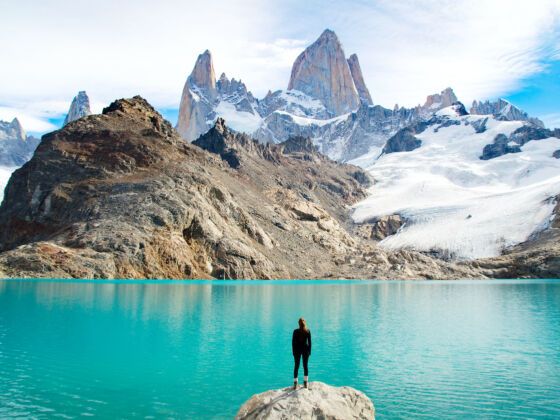There is horizontal, freezing cold rain hitting my face. I can’t feel my nose or fingers, and yet my torso is boiling hot, and sweating under a cheap plastic poncho, which is doing a fantastic job of keeping the heat in but not such a great job of keeping the rain out. My silhouette through the rain is that of a hunchback. Also cramped under the giant poncho is the 26-lb backpack I’m carrying, which is the only thing stopping the gale force wind from blowing me over.
Welcome to Patagonia.
“Why are we doing this?” I repeatedly ask my husband Steven. “We really need to rethink the word ‘vacation’”.
